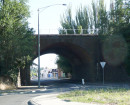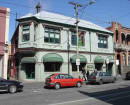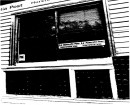Back to search results
MOUNT MISERY DIGGINGS CHINESE CAMP SITE
JUNCTION OF BERRINGA-MISERY CREEK ROAD AND MISERY CREEK ROAD ENFIELD, GOLDEN PLAINS SHIRE
MOUNT MISERY DIGGINGS CHINESE CAMP SITE
JUNCTION OF BERRINGA-MISERY CREEK ROAD AND MISERY CREEK ROAD ENFIELD, GOLDEN PLAINS SHIRE
All information on this page is maintained by Heritage Victoria.
Click below for their website and contact details.
Victorian Heritage Inventory
-
Add to tour
You must log in to do that.
-
Share
-
Shortlist place
You must log in to do that.
- Download report
On this page:
Statement of Significance
What is significant?
Archaeological elements include terraces, fireplaces, remnant market gardens and other typical settlement features. This place contains a shop, possible pig oven and rectangular tank, as well as pits and water races. The Mt Misery Chinese Diggings have remained relatively undisturbed.
The Mt Misery Creek Chinese Camp is of historical significance as an example of a relatively intact Chinese camp in the region with occupation ranging from the initial discovery of gold until the twentieth century. The camp is of social and archaeological importance to its potential to reveal information about the daily lives of Chinese miners and other information relating to these communities.
The Mt Misery Creek Chinese Camp is of historical significance as an example of a relatively intact Chinese camp in the region with occupation ranging from the initial discovery of gold until the twentieth century. The camp is of social and archaeological importance to its potential to reveal information about the daily lives of Chinese miners and other information relating to these communities.
How is it significant?
Why is it significant?
Show more
Show less
-
-
MOUNT MISERY DIGGINGS CHINESE CAMP SITE - History
Gold was discovered along the Mount Misery Creek in 1853 (The Argus, 22 November 1853) and within months had attracted over 200 miners working the scattered gullies along the creek. The 1861 census, in which Mount Misery area is included in the same census district as adjoining areas of activity extending wedstwards towards Enfield, recorded a population of 126 European men, 74 European women and 152 Chinese men living in 94 dwellings with access to a single store. By 1864 the Mount Misery diggings were identified within the Ballarat South mining district and the activity and number of miners noted in three-monthly Mining Registrars and Surveyors reports.
The dates of construction of the two water races spanning the site are uncertain. Applications for the construction of water races were as early as late 1857, but no plan of survey for any of these races survives.
The population of miners in the Mount Misery diggings reported in Mining Registrars and Surveyors reports peaked at 400 in 1870 but by 1883 had dropped to 100. By 1899, as references to dredging ventures near the site began to appear in the local press, the alluvial workings along the creek were largely deserted, yet maintained a Chinese presence (The Age 14 Feb 1899).
The earliest reference to Chinese miners at Mount Misery is contained in the letter book of William Foster, the Chinese Protector in the Ballarat region in November 1855, in which he recorded a visit to a Chinese community of miners at Mount Misery (Letter book, Reports and Diary of William Henry Foster, PROV VPRS 751/P0, Unit 1).
In 1864 The Argus (1 October 1864) refers to the Chinese camp as “a very cozy, compact little township, containing about 400 residents, and possessing a large number of stores, together with a joss-house, a well-furnished lottery-house, and gambling saloon”, suggesting a substantial settlement. Fourteen years later the Ballarat Star (23 Oct 1878) noted the presence of an encampment at the site “comprising hundreds of Chinese”.
One of a series of geological maps produced in the last decades of the 19th century (Lynchfield, County of Grenville, http://handle.slv.vic.gov.au/10381/125614) displays the boundary of the Chinese Camp at Mount Misery and five dots within it representing structures at its western end.
Reports in The Ballarat Star of 7 Feb 1899 and, several years later, in The Age (16 April 1902), together with the scatter of structures represented on the geological map, suggest that the population of the camp had dwindled to become a collection of indigent miners and had ceased to be a community. Dredging ventures and dam construction in 1905 along the Mount Misery Creek now referred to “the old Chinese camp” (Ballarat Star, 21 August and 2 October 1905).
Local memory (A Memorial to the Chinese People of Surface Point Mt. Misery, 19 April 1993, Buninyong Historical Society) suggests that market gardens and a Chinese grocery remained alongside the track at the base of this ridge into the 1920s (pers. Comm. Charles Zhang, January 2021). A certificate of marriage between Ah Gouy Sang, storekeeper at Mount Misery and Elizabeth Sharp of Little Hard Hills in 1870, and depositions in police reports support the presence of a Chinese operated store on the site beyond 1896 (VPRS24/P0000 1896/751).
The area was incorporated into a forest reserve in the early 20th century. The forest, regenerating following wholesale clearance in the second half of the 19th century, supported low-intensity forestry and a eucalyptus oil industry. The surrounding diggings were the site of gold mining activity during depression years of the late 19th century and the 1930s, during which all removable material of any value was salvaged. A fossicking reserve encompassing the course of the Mount Misery Creek continues to be the focus of activity. The Enfield Forest Park was created in 1995, placing the majority of what had become the Enfield State Forest under the management of Parks Victoria. The site of the Chinese camp, now the Surface Point picnic area, remains a focus for local recreational activity.
Deforestation in the course of gold mining activity, diversions of the course of the creek and sluicing activity in the later decades of the 19th century have in places transformed the local topography of the creek and its flow regime. Significant deposits of sludge have overlaid earlier soil horizons across portions of the alluvial creek terraces. Heavy flow across the catchment after sustained rainfall has in places cut deep channels into alluvial terraces exposing bedrock and has swept away surviving goldfields infrastructure. Regular bushfires have destroyed all exposed inflammable infrastructure. The remoteness of the site, however, and the current role of the Surface Point picnic ground and the surrounding Enfield Forest Park as recreational and historical landscapes have preserved the archaeological integrity of the site.Heritage Inventory Description
MOUNT MISERY DIGGINGS CHINESE CAMP SITE - Heritage Inventory Description
Archaeological elements include terraces, fireplaces, remnant market gardens and other typical settlement features. This place contains a shop, possible pig oven and rectangular tank, as well as pits and water races. The Mt Misery Chinese Diggings have remained relatively undisturbed. The Mt Misery Creek Chinese Camp is of historical significance as an example of a relatively intact Chinese camp in the region with occupation ranging from the initial discovery of gold until the twentieth century. The camp is of social and archaeological importance to its potential to reveal information about the daily lives of Chinese miners and other information relating to these communities.
-
-
-
-
-
RULES OF THE MELBOURNE FOOTBALL CLUB
 Victorian Heritage Register H2428
Victorian Heritage Register H2428 -
NORTH MELBOURNE POTTERY
 Victorian Heritage Inventory
Victorian Heritage Inventory -
STONY CREEK SLIPWAY
 Victorian Heritage Inventory
Victorian Heritage Inventory
-
..esterville
 Yarra City
Yarra City -
1 Alfred Crescent
 Yarra City
Yarra City -
1 Barkly Street
 Yarra City
Yarra City
-
-










